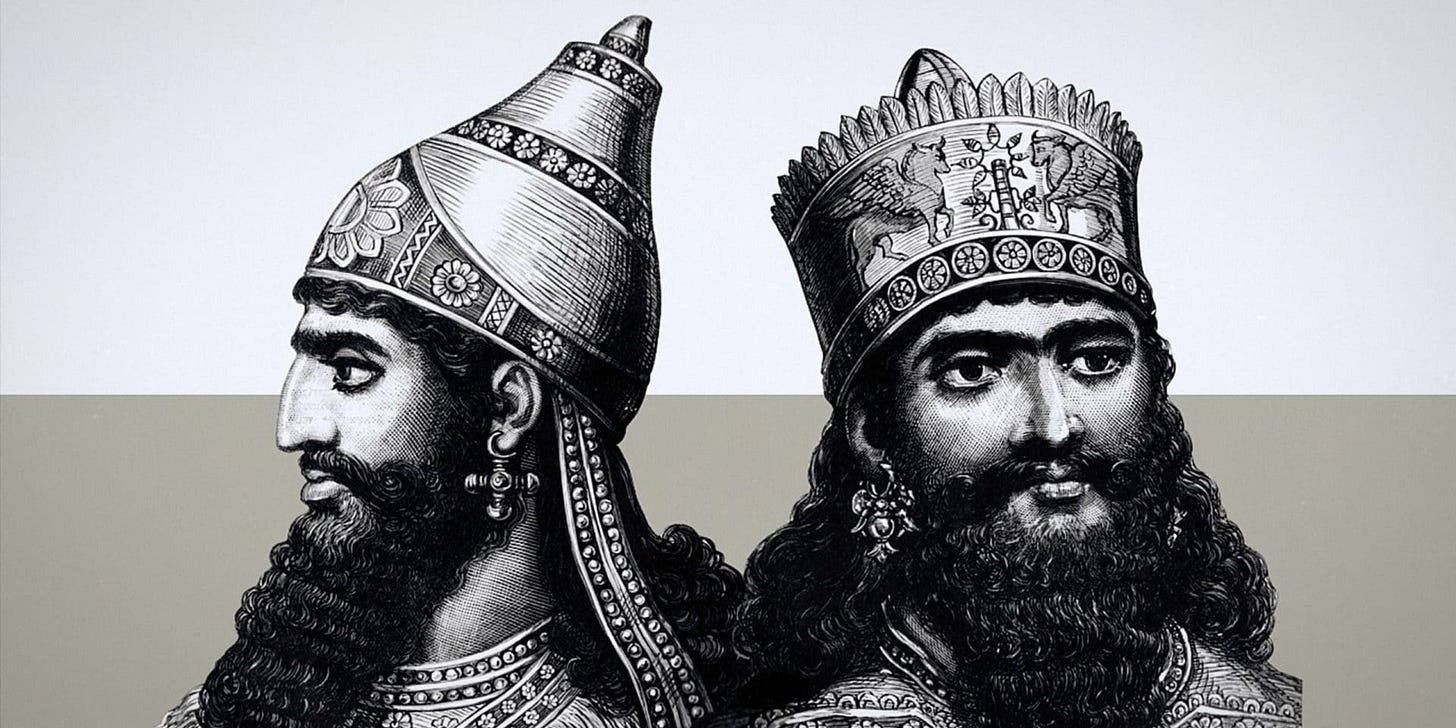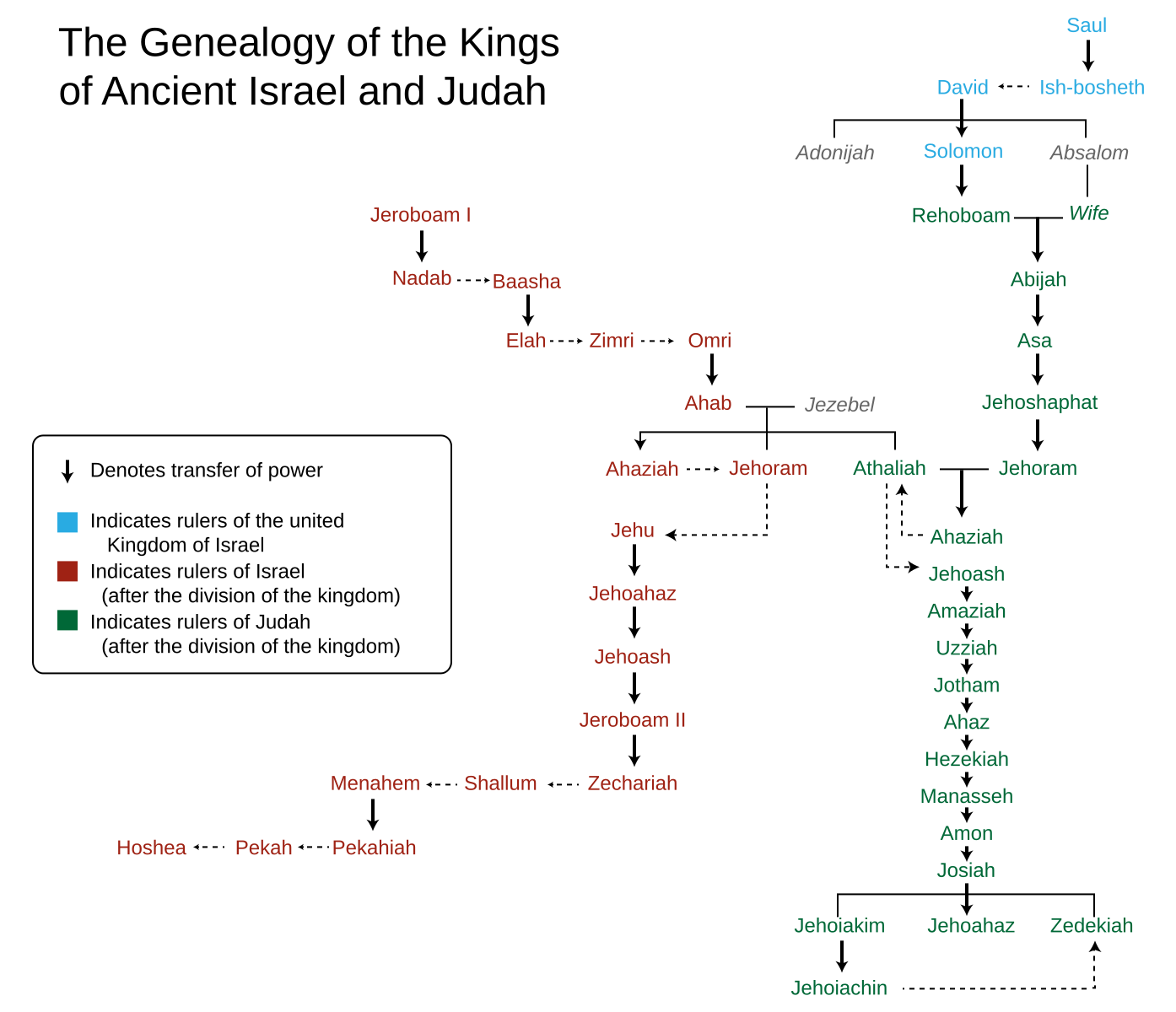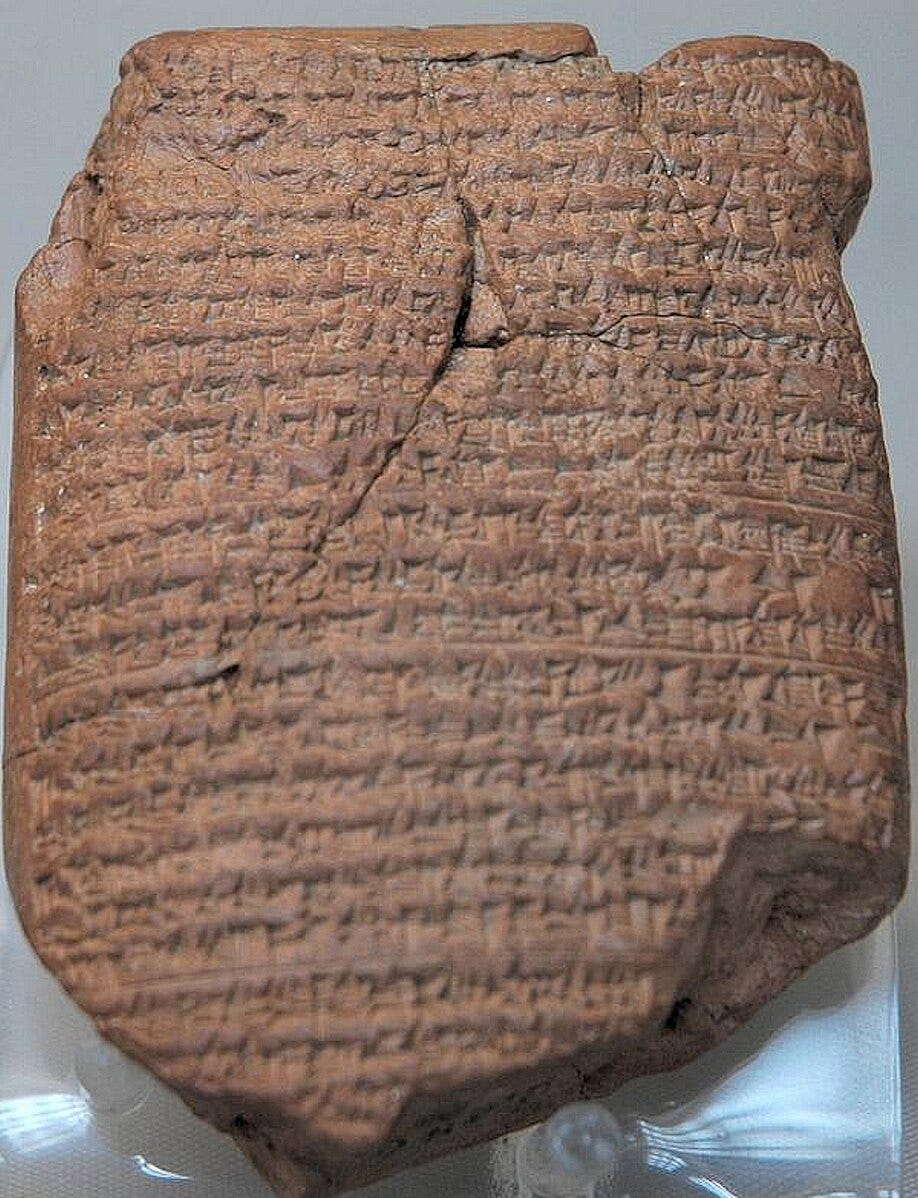Diving into Daniel: Nebuchadnezzar Besieges Judah
Daniel 1:1-2 - In which we learn that having to dig in and study OT history, as opposed to just reading about it, reveals new knowledge and understanding!
“In the third year of the reign of Jehoiakim king of Judah, Nebuchadnezzar king of Babylon came to Jerusalem and besieged it. The Lord gave Jehoiakim king of Judah into his hand, along with some of the vessels of the house of God; and he brought them to the land of Shinar, to the house of his god, and he brought the vessels into the treasury of his god.”
Daniel 1:1-2 NASB1995
So now we plunge into the history recorded in the early portions of the Book of Daniel. In Precept Austin, there is a handy table showing the history of Israel up to the times of exile. If we recall our Biblical history (and I can cheat by using that table) from the books of 1 and 2 Samuel, 1 and 2 Kings and 1 and 2 Chronicles, the era of the kings of united Israel (Saul, David, Solomon) started in about 1050 BC. The kingdom was divided in about 931 BC after the sin of Solomon, with the kings of Israel (northern region) coming from ten tribes and kings of Judah (southern region, including Jerusalem) from the tribes of Judah and Benjamin. I admit that my eyes glazed over a few times reading the “Bible in One Year” many times about the various kings during these times, but I do recall that all of the kings of Israel were evil while some of the kings of Judah were good. I also found a great flow chart of those kings from Wikipedia Commons; the flowchart is released for any use by the creator, as noted at the link:
In 722 BC, the northern region of Israel was taken captive by Assyria. Judah, while still “independent” fell under Egyptian rule. Jehoaikim, the second-to-last king of Judah, was raised up by Pharaoh and replaced his brother Jehohaz (both were sons of a “good” king Josiah). The Babylonian empire wanted to defeat the rule of the Egyptians, hence the actions that began under Nebuchadnezzar (actually Nebuchadnezzar II) that also fell upon Judah. Here is some background on Jehoaikim from Precept Austin quoting Easton’s Bible Dictionary:
Jehoiakim - ("He whom Jehovah has set up") the second son of Josiah, and eighteenth king of Judah, which he ruled over for eleven years (B.C. 610-599). His original name was Eliakim (q.v.). On the death of his father his younger brother Jehoahaz (= Shallum, Jer. 22:11), who favored the Chaldeans against the Egyptians, was made king by the people; but the king of Egypt, Pharaoh Necho II invaded the land and deposed Jehoahaz (2 Kings 23:33, 34; Jer. 22:10-12), setting Eliakim on the throne in his stead, and changing his name to Jehoiakim. After this the king of Egypt took no part in Jewish politics, having been defeated by the Chaldeans at Carchemish (2 Kings 24:7; Jer. 46:2).
Palestine was now invaded and conquered by Nebuchadnezzar. Jehoiakim was taken prisoner and carried captive to Babylon (2 Chr. 36:6, 7). It was at this time that Daniel also and his three companions were taken captive to Babylon (Dan. 1:1, 2). Nebuchadnezzar reinstated Jehoiakim on his throne, but treated him as a vassal king. In the year after this, Jeremiah caused his prophecies to be read by Baruch in the court of the temple. Jehoiakim, hearing of this, had them also read in the royal palace before himself. The words displeased him, and taking the roll from the hands of Baruch he cut it in pieces and threw it into the fire (Jer. 36:23). During his disastrous reign there was a return to the old idolatry and corruption of the days of Manasseh.
After three years of subjection to Babylon, Jehoiakim withheld his tribute and threw off the yoke (2 Kings 24:1), hoping to make himself independent. Nebuchadnezzar sent bands of Chaldeans, Syrians, and Ammonites (2 Kings 24:2) to chastise his rebellious vassal. They cruelly harassed the whole country (comp. Jer. 49:1-6). The king came to a violent death, and his body having been thrown over the wall of Jerusalem, to convince the besieging army that he was dead, after having been dragged away, was buried beyond the gates of Jerusalem "with the burial of an ass," B.C. 599 (Jer. 22:18, 19; 36:30). Nebuchadnezzar placed his [Jehoaikim’s] son Jehoiachin on the throne, wishing still to retain the kingdom of Judah as tributary to him. (Easton's Bible Dictionary)
Babylonian Chronicles Tablet, British Museum - Photo is released for any usage by Wikipedia
Enduring Word has some great commentary on Nebuchadnezzar and these times in Judah; David Guzik did his homework to help us understand the Biblical history and to refute critics of the Book of Daniel:
b. Nebuchadnezzar king of Babylon: This was the mighty ruler of the Babylonian Empire. The name Nebuchadnezzar is a Hebrew transliteration of the Babylonian name Nebu-kudduri-utzur, which means “Nebu protects the crown.”
c. Came to Jerusalem and besieged it: Nebuchadnezzar came against Jerusalem because the Pharaoh of Egypt invaded Babylon. In response, the young prince Nebuchadnezzar defeated the Egyptians at Charchemish, then he pursued their fleeing army all the way down to the Sinai. Along the way (or on the way back), he subdued Jerusalem, which had been loyal to the Pharaoh of Egypt.
i. This happened in 605 B.C. and it was the first (but not the last) encounter between Nebuchadnezzar and Jehoiakim. There would be two later invasions (597 and 587 B.C.).
ii. Some say that this mention of the siege of Jerusalem is a historical blunder made by a pseudo-Daniel. This is based on the fact that this invasion in 605 B.C. is not mentioned in the book of Kings. But the Jewish historian Josephus quotes the Babylonian historian Berossus, showing that the Biblical account of three separate Babylonian attacks on Judah is accurate (Against Apion, I 19 and Antiquities, X 11, 1).
iii. This specific attack mentioned by Daniel is documented by the Babylonian Chronicles, a collection of tablets discovered as early as 1887 and kept in the British Museum. Nebuchadnezzar’s 605 B.C. presence in Judah is documented and clarified in these tablets.
iv. When the Babylonian Chronicles were finally published in 1956, they gave us first-rate, detailed political and military information about the first 10 years of Nebuchadnezzar’s reign. L.W. King prepared these tablets in 1919. He then died, and they were neglected for four decades.
v. Excavations also document the victory of Nebuchadnezzar over the Egyptians at Carchemish in May or June of 605 B.C. Archaeologists found evidence of battle, vast quantities of arrowheads, layers of ash, and the shield of a Greek mercenary fighting for the Egyptians.
vi. This campaign of Nebuchadnezzar was interrupted suddenly when he heard of his father’s death and raced back to Babylon to secure his succession to the throne. He traveled about 500 miles in two weeks – remarkable speed for travel in that day.
vii. Therefore, we know that the siege of Jerusalem in 605 B.C. was cut short by Nebuchadnezzar’s return to Babylon. This was not specifically detailed in the Babylonian Chronicles, but it is entirely consistent with the record.
d. In the third year of the reign: There is also no contradiction between Daniel (who said this happened in the third year of Jehoiakim) and Jeremiah 46:2 (which said it was in the fourth year of Jehoiakim). Daniel reckoned a king’s years after the Babylonian method: the first year of a king’s reign began at the start of the calendar year after he took the throne. Jeremiah used the Jewish method.
i. “It was customary for the Babylonians to consider the first year of a king’s reign as the year of accession and to call the next year the first year… Having spent most of his life in Babylon, it is only natural that Daniel should use a Babylonian form of chronology.” (Dr. John Walvoord)
e. And the Lord gave Jehoiakim king of Judah into his hand: In this 597 B.C. deportation Jehoiakim, Ezekiel, and others were taken away. This deportation is described in 2 Kings 24:14-16.
i. This was prophesied in Isaiah 39:7: And they shall take away some of your sons who will descend from you, whom you will beget; and they shall be eunuchs in the palace of the king of Babylon. This prophecy leads some to think Daniel and his companions were made eunuchs. Certainly, the Hebrew term saris was used of literal eunuchs; but the word derives from a phrase that simply means to be a servant of the king. It wasn’t exclusively applied to literal eunuchs.
ii. The LORD gave Judah into the hands of the Babylonians for mainly two reasons. The first was Israel’s idolatry and the second was their failure to observe the Sabbaths for the land (Leviticus 25:1-7 and 26:2-35). This shows that God always settles accounts with those who refuse to respond to His warnings. In the 587 B.C. invasion the city of Jerusalem and the temple were destroyed (2 Kings 25:9-10).
f. Some of the articles of the house of God: Nebuchadnezzar did not take all the furnishings of the temple, only some. The remaining furnishings were either hidden before Nebuchadnezzar came or they were brought to Babylon later.
i. The confiscation of these items and their deposit in a Babylonian temple was a dramatic declaration by Nebuchadnezzar saying, “my god is better than your God.” Now the God of Israel had to vindicate Himself.
ii. This was a low time for Judah and God’s people. It seemed that the God of Israel lost out to the gods of Assyria, Egypt, and Babylon. The Book of Daniel shows God vindicating Himself at a time when the conquest of Israel might have brought God’s reputation into disgrace.
So, dear readers, you should now have some knowledge of the time that Daniel was brought to Babylon. God does not need to vindicate Himself, but He uses people of history to further His kingdom and the story of Daniel is timed just right for the people of Israel.
My next devotional examines Daniel 1:3-7 - Four Hebrew youths are brought forward for service to the King.
Heaven on Wheels Daily Prayer:
Dear Lord - Thank you so much for guiding me to various sources about this time in Biblical history at the start of the Book of Daniel. I love having new knowledge of Your will and sovereignty. Amen.
Scripture quotations taken from the (NASB®) New American Standard Bible®, Copyright © 1960, 1971, 1977, 1995 by The Lockman Foundation. Used by permission. All rights reserved. lockman.org
Precept Austin was accessed on 3/13/2025 to review commentary for Daniel 1:1-2.
Commentary from Enduring Word by David Guzik is used with written permission.






I appreciate this comprehensive discussion on the history of Israel. I’m reading Daniel and seeking a better understanding of what was going on around him. Thank you for doing homework for me and making this detailed but easy to understand.